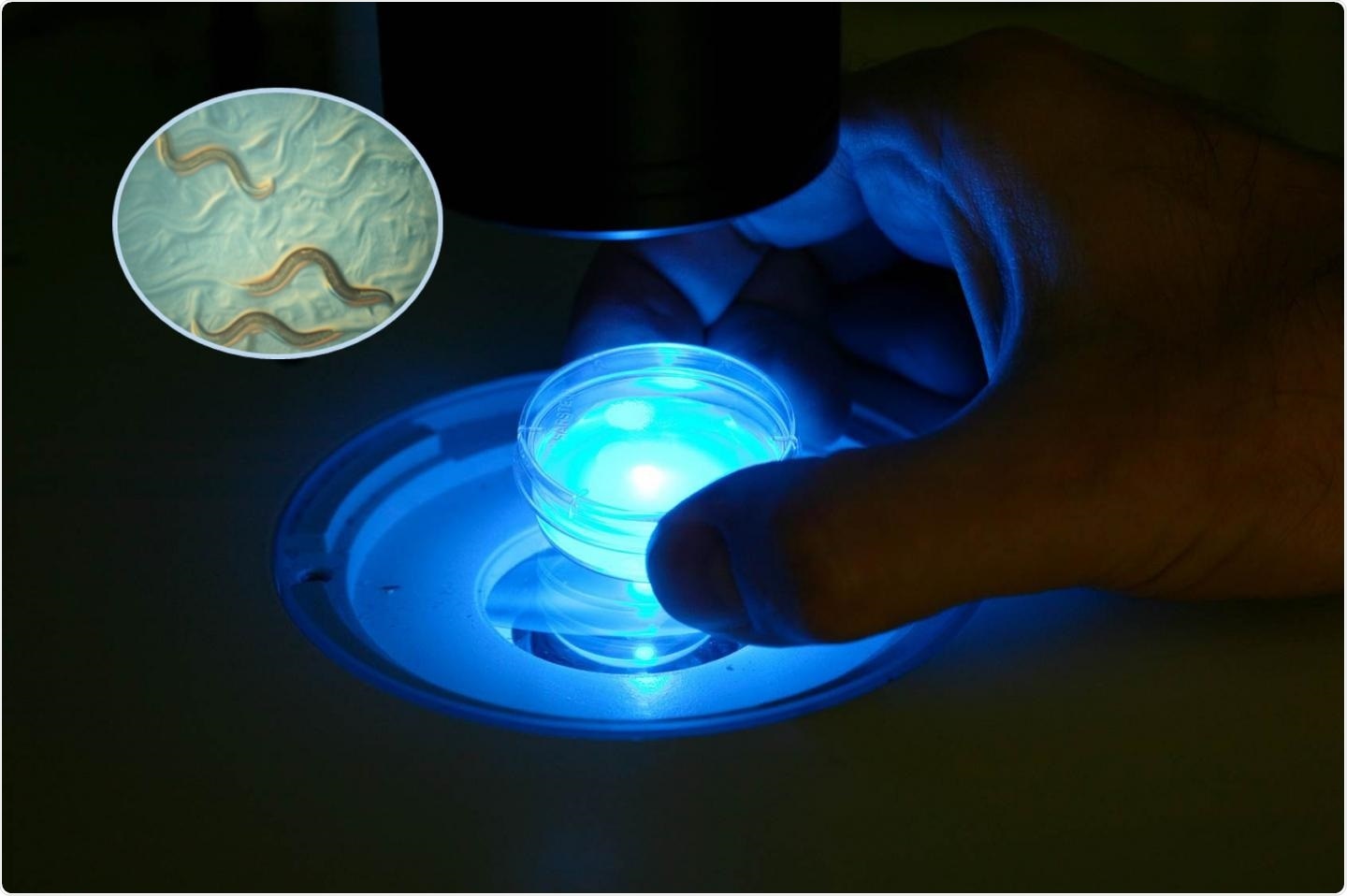The majority of organisms feature the series of ENDOU enzymes, but despite this fact, the functions of these enzymes have not been properly understood.

The nematode C. elegans, which is only 1 millimeter in size, is remarkably similar to humans from a genetic standpoint. Scientists can use the worm to study human diseases, life expectancy, and even addictive behavior. Image Credit: Ralf Baumeister.
In human beings, ENDOU enzymes have been associated with cancer. RNA viruses, including SARS-CoV2, contain a gene that corresponds to the ENDOU enzymes, and this is significant for the replication of the virus and the suppression of the immune reaction.
But to date, only minimal details of the activity of these enzymes are known. A team of researchers, headed by Dr. Wenjing Qi, a molecular geneticist from the University of Freiburg, now provides some additional details about its role in a study published by the leading scientific journal, Nature Communications.
The researchers suggested that the ENDU-2 gene could be responsible for remotely stimulating the tumors in the body. The team also identified a novel, apparently contradictive response: when the ENDU-2 gene is under stress, it can play a role in the protection as well as the destruction of the organism.
The team analyzed the nematode worm C. elegans, which is often used for such genetic studies. Over 60% of the genes are analogous in humans and worms, including the one for ENDOU, known as ENDU-2.
The present theory of tumor development indicates that cells only turn into cancer cells when errors, known as mutations, build up in their genes. For instance, these mutations emerge during aging or from radiation, and certain chemicals.
Back in 2017, Qi had demonstrated that such kinds of errors do not necessarily have to occur in the tumor cells themselves; however, they can also emerge elsewhere in the body. Hence, cancer is activated from a distance, so to speak. Qi suspected that the impaired cells, in this case, transmit signals to achieve this, which subsequently reprogram the other tissues. The team has now identified the signal for this—ENDU-2.
ENDOU/ENDU-2 is not only selectively discharged from stressed cells and circulated throughout the body, but it can also bind to the messenger RNA (mRNA) of many genes at the site of origin and in the target cells.”
Dr Wenjing Qi, Molecular Geneticist, University of Freiburg
Such mRNAs are the working copies of genes and are required as blueprints for developing all kinds of enzymes and proteins. What surprised the scientist was that the ENDU-2 gene can carry out two different functions even under stress: at the origin site, the ENDU-2 gene cuts and kills the mRNA, which decreases metabolism and inhibits the already stressed organism from producing defective new proteins.
At the destination, the RNA continues to remain intact, and the ENDU-2 gene helps these cells to live. But for this, it must be dosed accurately, or else it can lead to the development of tumors.
One conclusion that can be drawn from this study could be that the worm particularly shields the embryo, that is, its offspring, at times of considerable stress.
In this way, it seems guaranteed that whenever the organism’s self-healing powers are not sufficient for mother and child, it at least ensures the survival of the progeny.”
Dr Ralf Baumeister, Professor, University of Freiburg
Dr. Baumeister also participated in the study and in whose department Qi heads a research team group.
Now, the Freiburg team is aware that the loss of the ENDU-2 gene can also reprogram stem cells. These subsequently lose their immortality within a few generations. The researchers now intend to investigate the kinds of conditions that cause the ENDU-2 gene to differentiate between protection and destruction.
Source:
Journal reference:
Qi, W., et al. (2021) The secreted endoribonuclease ENDU-2 from the soma protects germline immortality in C. elegans. Nature Communications. doi.org/10.1038/s41467-021-21516-6.